HOUSEHOLD INCOME AND WEALTH DISTRIBUTION
To analyse the way that income and wealth are shared across households in Australia, households are ranked from lowest to highest income or wealth and then divided into five equal groups with 20% of the population in each group (quintiles).
As shown in Graph 1, after taking account of the number and age of people in the household, households in the highest income quintile received 40% of total income in 2015–16. By comparison, households in the lowest income quintile received just 8% of total income. This pattern has remained relatively stable over the past 22 years.
The distribution of wealth is more unequal than the distribution of income. Graph 1 shows that the wealthiest 20% of Australian households owned 63% of total household wealth in 2015–16. By comparison, the lowest 20% of households owned less than 1% of all household wealth.
Graph 1 - SHARE OF EDHI AND NET WORTH(a) PER QUINTILE, 2015-16
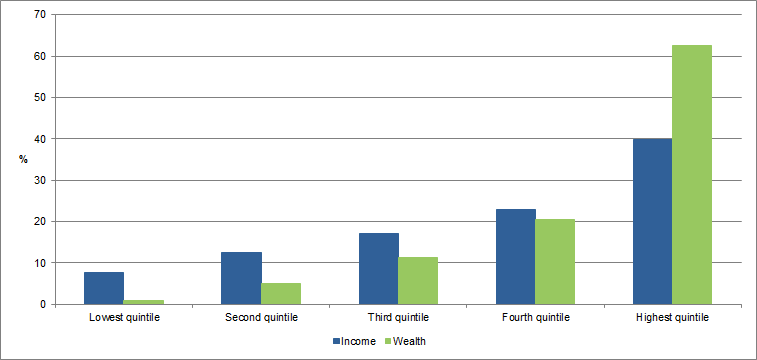
Footnote(s): (a) Equivalised disposable household income
Source(s): ABS Survey of Income and Housing, 2015–16
Mean equivalised disposable household income in Australia in 2015–16 was $1,009 per week. The median was lower, however, at $853 per week. This is due to the larger proportion of households with middle or low income and the small proportion of very high income households, as shown in Graph 2.
Graph 2 - DISTRIBUTION OF HOUSEHOLD INCOME(a), 2013-14 to 2015-16
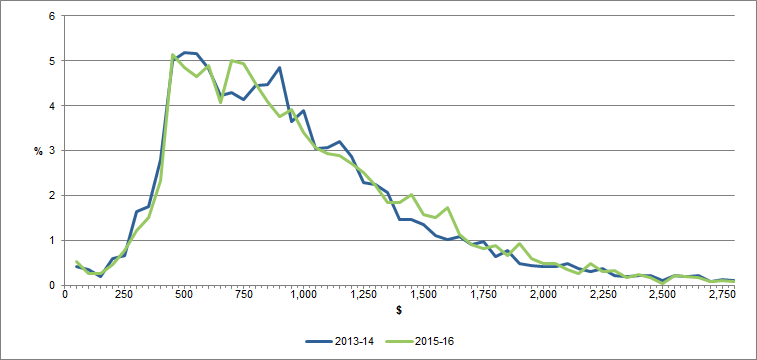
Annotation(s): Persons with an income between $50 and $2,800 are shown in $50 ranges on the graph
Footnote(s): (a) Equivalised Disposable Household Income, weekly
Source(s): ABS Survey of Income and Housing, 2013–14, 2015–16
As shown in Graph 3, there is greater inequality in the distribution of wealth than income. The lowest 20% of households, in terms of net worth, had a mean net worth of $36,500. In comparison, the mean net worth of the wealthiest 20% of households was more than 70 times that of the lowest 20% of households, at $2,906,400. The mean net worth of all households in Australia in 2015–16 was $929,400 while the median was much lower at $527,000.
Graph 3 - DISTRIBUTION OF HOUSEHOLD NET WORTH, 2013-14 to 2015-16
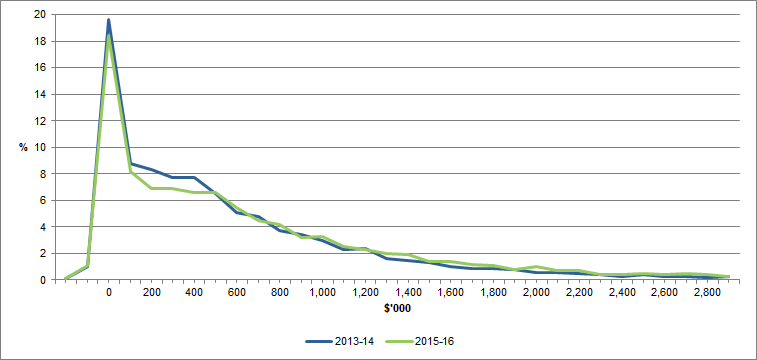
Annotation(s): Households with net worth between $-100,000 and $3,000,000 are shown in $100,000 increments
Source(s): ABS Survey of Income and Housing, 2013–14, 2015–16
There are many summary indicators that can be used to help understand the distribution of income and wealth across the population. The ABS uses the Gini coefficient as an internationally comparable indicator. The Gini coefficient lies between 0 and 1. If everyone in the population had the same income or wealth, the Gini coefficient would be zero. Gini coefficient values that are closer to 1 represent greater inequality. Compared to other summary indicators, the Gini coefficient is not overly sensitive to low or negative incomes.
In 2015–16, the Gini coefficient for gross household income was 0.434. After taking into account household composition and income tax, the Gini coefficient for EDHI was 0.323.
Graph 4 - INCOME GINI COEFFICIENT 1994–95 to 2015–16(a)
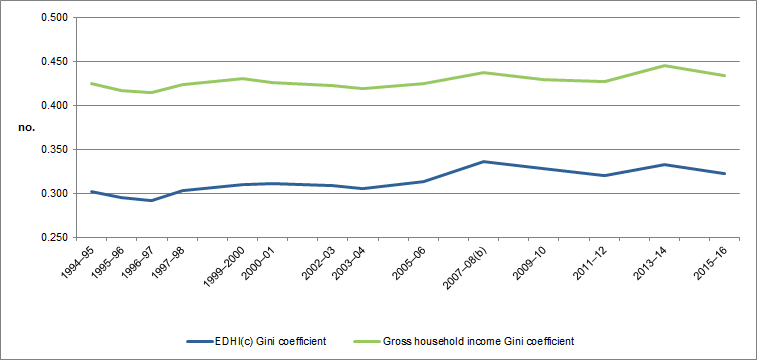
Footnote(s): (a) Survey of Income and Housing data was collected in labelled years (b) Estimates presented for 2007–08 onwards are not directly comparable with estimates for previous cycles due to the improvements made to measuring income introduced in the 2007–08 cycle. Estimates for 2003-04 and 2005-06 have been recompiled to reflect the new measures of income, however not all components introduced in 2007-08 are available for earlier cycles (c) Equivalised disposable household income
Source(s): ABS Survey of Income and Housing, 2015-16
The Gini coefficient for wealth is typically higher than for income, reflecting greater inequality in the distribution of wealth. The Gini coefficient for wealth in 2015–16 was 0.605.
Graph 5 - WEALTH GINI COEFFICIENT 2003–04 TO 2015–16(a)
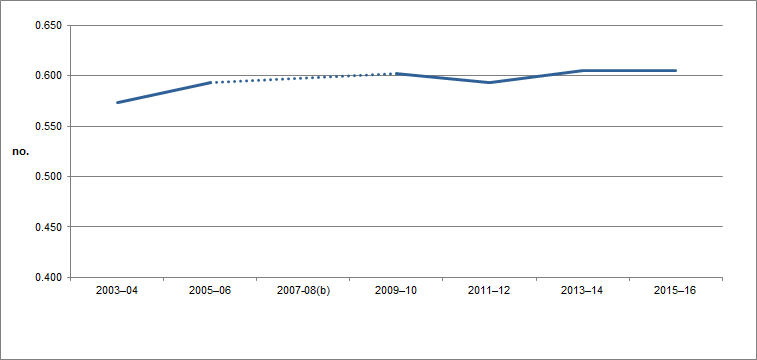
Footnote(s): (a) Comprehensive wealth data was not collected in 2007–08
Source(s): ABS Survey of Income and Housing, 2015–16
 Print Page
Print Page
 Print All
Print All
 Quality Declaration
Quality Declaration